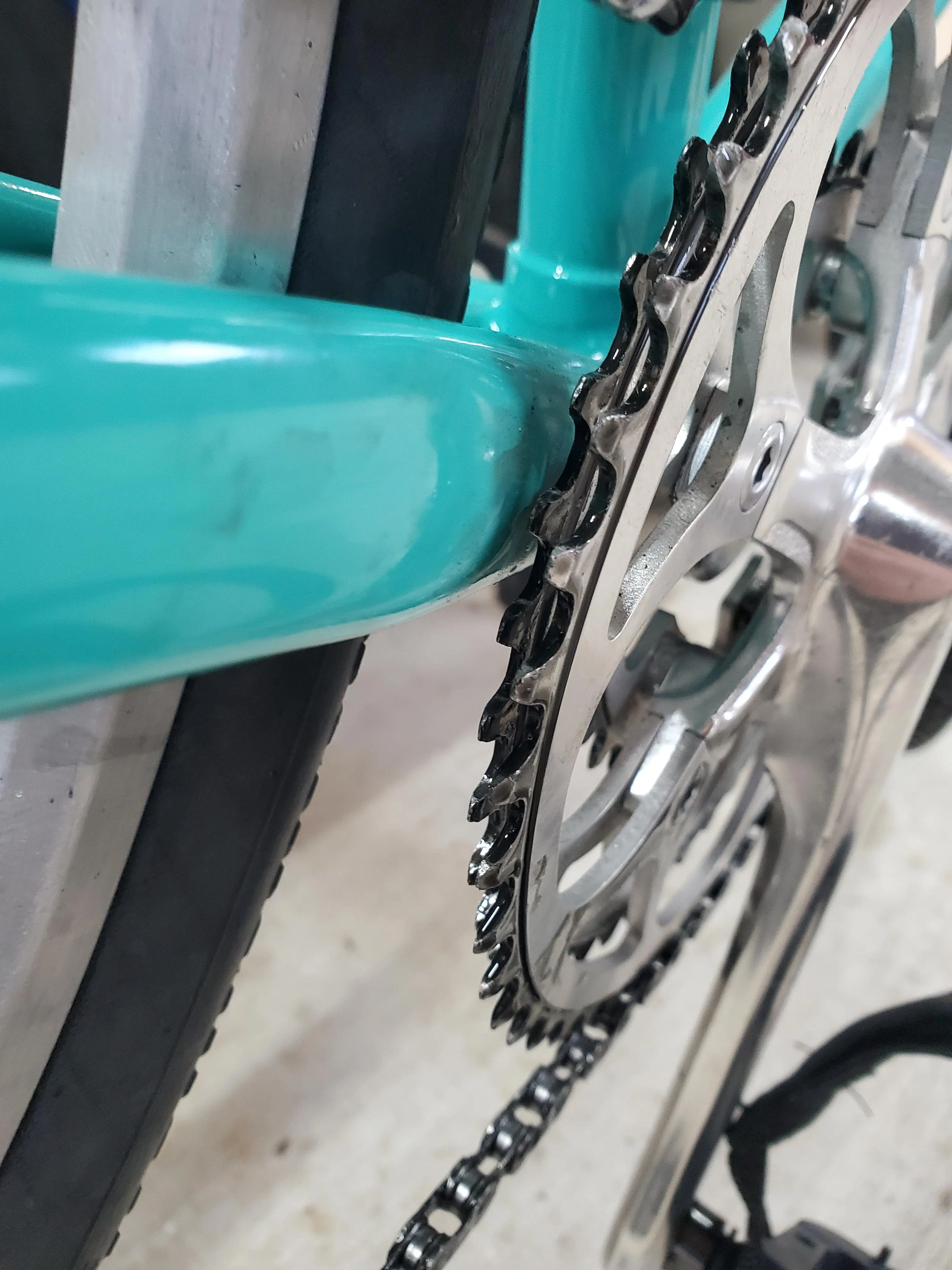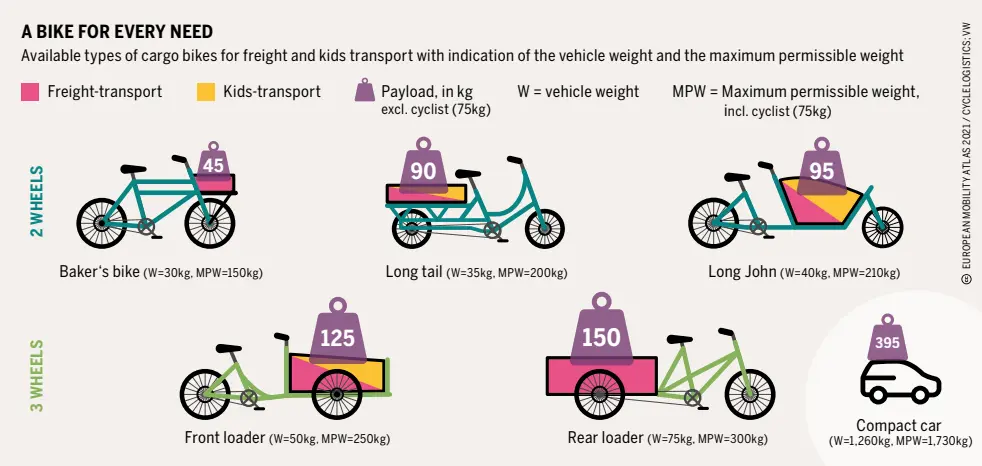
-
How to best investigate what may be a bent derailleur
Riding into work yesterday, somehow while upshifting my chain slipped off the smallest cog onto the frame and hopped off the jockey wheel in the derailleur - all very drastic, but it suggests to me the derailleur twisted?
Historically getting down out of the 9th or 10th gear would need 'a little extra thumb' past the shifters click, that now seems to be the case for the top few gears - but the rest of the 11 speed cluster works great still
Does this sound more like I've worn the cogs somehow or twisted / bent the derailleur?
If it was bent, I thought it would affect all shifting...
It's a shimano HG 11 speed with their reasonably recent chain that's supposed to be really long lasting (possibly intended for e bikes? Mines an old analog, mojo geometron)
I should really double check what the parts are (being a Muppet), and get a photo of the alignment, but I'd love to be able to something on my own before wheeling it into the LBS
-
Is this normal?
We got this bike for my nephew, but this piece of plastic between the shifter and the brake puts the brake so far away that even i as an adult can only reach it with one finger
The piece seems to be connected to the shifter.
-
How to clean a chain: saturate the chain, or not? Remove it, or not?
I’m seeing a contradiction on chain cleaning articles. One dodgy site says:
> It is essential to avoid some common mistakes when cleaning a bike chain. Firstly, be cautious not to oversaturate the chain with degreaser as this can lead to damage or corrosion.
Then another site says to remove the chain and submerge it in degreaser.
The first site seems dodgy, like one of these machine-generated sites that scraps together fragments of other works and plagurizes it in a clumsy way. But is the advice good? If the chain is 100% degreased, when you oil it wouldn’t the oil eventually spread everywhere it’s needed?
The 2nd article says remove the chain. Yet I’ve heard advice to not re-use quick-links. So WTF are they implying we need to buy a new quick-link every time we clean it? If yes, then removing the chain defeats the cost effective motivation for cleaning it in the 1st place.
Maybe this is crazy talk, but one idea I have is to leave the chain on the bike and submerge just the deraileur into an ultrasonic bath and very slowly move the chain through it. Not sure if my deraileur has ball bearings.. if it does, then indeed the ultrasonic would be a bad idea.
-
Chain starting to slip after 23 months. Normal? Does cleaning really make much difference?
I replaced the whole drivetrain 23 months ago (cassette + crankset + chain all at once). I bought the cheapest new parts I could find which came out to 5 local Big Macs on today’s McDonald’s index (in total).
The chain has started slipping every time it rains. I don’t blame the rain I just suspect that it’s reaching the end of life and the water just puts it over the edge enough to slip. I assume it will soon start slipping in dry conditions as well, correct?
Can I do much better than 2 years?
I somewhat abused the chain. Added proper oil every ~2 weeks but never cleaned it. There are lots of unsupported claims in the wild that cleaning the chain substantially increases the longevity. Okay, sounds plausible but I’ve seen no stats. If a weekly cleaning (thus 104 cleanings) would extend the drivetrain’s life by a couple weeks for example, that’s not worth the effort. So does anyone have any figures, even anecdotal?
Guess I should mention this is urban city riding, not trail, so presumably cleaning would be less impactful. And I’m not a serious enough rider to need high performance.
I’ve also heard the sprocket and cassette should be replaced every other chain replacement. Is that good advice? So I only need to replace the chain at this point?
Is it just the chain’s life that is shortened by not cleaning, or are the gears also significantly worn down faster?
-
Cleaning salvaged bicycle parts non-destructively (for non-bike projects)… reusing enzymes?
Parts like sprockets, chains, hubs, BBs, etc are quite useful for projects to build tools, furniture, art. I get them at no cost by dumpster diving. Cleaning them is quite a pain though. These are some of the options I’ve considered:
-
dishwashing machine— if normal dishwasher detergent is used, I would expect it to corrode aluminum parts (correct? Can someone confirm or deny that?) Chains and /some/ sprockets are steel, right? Would they do well in the dishwasher? I wonder if there is some kind of alternative detergent that won’t harm aluminum since I always have to hand-wash an aluminum pot cover.
-
ultrasonic bath— this method strikes me as the most convenient and what I would expect someone who needs to clean lots parts to use. But there is a risk of de-anodization if you use degreaser. Some jewelers use ultrasonic cleaners with a cocktail of Mr. Clean and ammonia. Would that work well on bicycle parts, non-destructively?
-
Enzyme-based oven cleaner— I tested this on sprockets and it seemed to work quite well but doesn’t get into the nooks and crannies and dissolve any of the mud.
-
Enzyme-based drain cleaner— instructions say wait 6 hours, so i did not test it. Is that time perhaps just because it takes that long to spread down the drain and munch on large volumes of gunk? Perhaps it would work in less time on bicycle parts.
-
boiling water with dish soap— I hoped it would melt the greasy grime. The water was quite dirty afterwards but did not make much noticeable progress.
-
degreaser spray— did not test this. I just have degreaser for kitchen surfaces so maybe not the right stuff.
-
bicycle cleaning spray— kind of strange that this exists. Bicycles have many different materials and different kinds of grime. It did not do too well on greasy sprockets as far as I could tell.
Question on the enzyme-based cleaners: enzymes are a bit pricey by volume compared to other cleaners. Is there a way to store and reuse them? Ideally I would like to pour a bottle of enzyme-based drain cleaner into a bucket and just always soak parts in that same bucket. Do those little guys multiply when you feed them? If the water is always dirty, will the enzymes always be too full to chow down on parts being added?
-
-
STI doesn't index anymore? - Maybe wind a new spring.


Just while riding along, my shifter suddenly decided to only shift down - not up anymore. Bike-shop: "get a new one" After opening the shifter (a special bit is needed for that), it's clear that the spring at the very top is broken:
Sadly, this spring is not sold as a separate part.
Losing the snap ring at the back of the bolt that holding the spring and bending the front sheet metal a little bit to the right allowed the bold and spring to be taken out:
Bending a new spring out of 1mm spring wire with a drill, a bend nail and two blocks of wood holding the wire. The Nail should be 2mm in diameter to allow for a final inner diameter of 3mm of the spring.
Bending the spring legs in position:
Works again:
This is an ST-RS505 right side shifter, btw.
-
For how much longer do you think this tire is going to hold? (satire)


This indeed is my bike and it's been like that all summer but I'm not actually concerned that it's going to catastrophically fail on me though it might. Already have a new set of tires but I'll try to save them for winter to save the new grippy tread pattern.
The extreme wear is most likely caused by running these at 4 - 5psi while it's way freezing outside.
-
If your crankset is very close to the bike frame like in this picture, you either need a longer bottom bracket or to replace your middle chainring with a smaller one.


The bike's body bends during use and it will scratch itself on the ring teeth and the chain. Sometimes older bikes have a bigger number of teeth on the middle chainring like this (s:m:l ring teeth ratio is about 32/48/52 teeth).
chainring = 31; bottom bracket spindle = 26; bottom bracket shell = the hole where 27 is marked to go in

